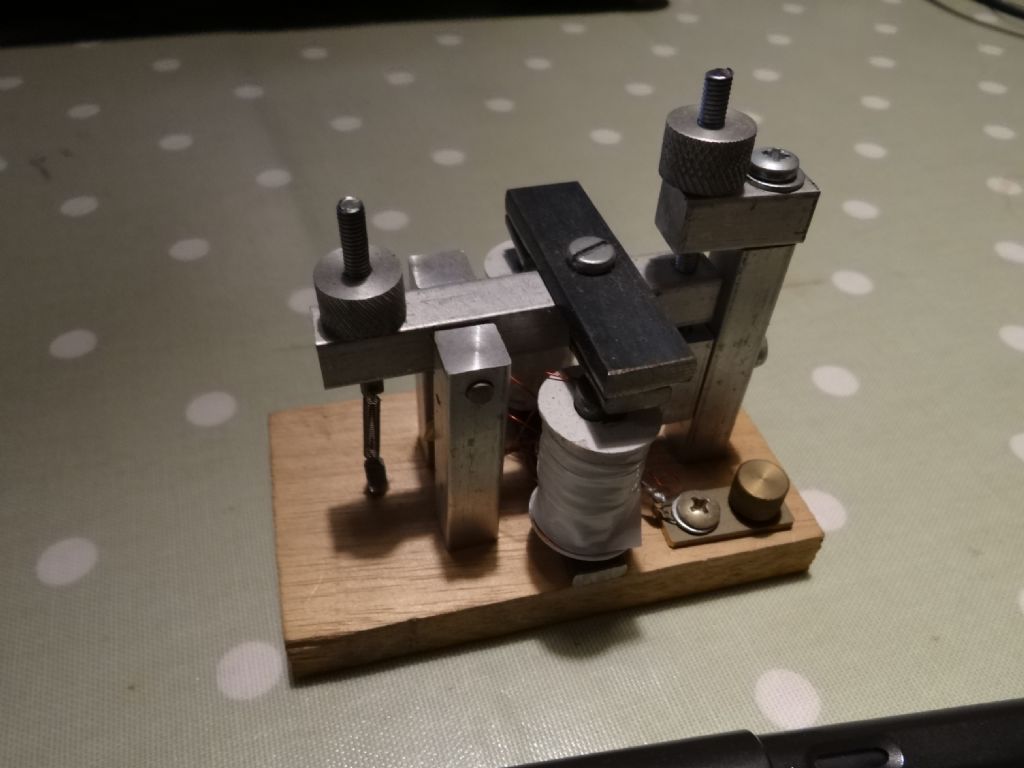I hope some of this is of more general interest. Here's a picture of the first 'real' thing I for which my mini-lathe was useful. I turned the cores, made the adjusting knobs, the terminal screws, and some threading and knurling. I tried to wind the coils on the lathe but that was a disaster – 150 rpm was too fast and there's no clutch.

The device is a telegraphic Morse sounder as featured in cowboy films. A dot is a fast double click, and a dash is a slow double click – it doesn't beep nice tones like you get off the radio.
The magnetic part is similar to Jason's motor. A real electrical engineer would have worked out the number of turns & wire gauge needed to pull the magnet against the spring at a particular current and voltage. I guessed!
Now I move on to thin ice because my maths is dreadful! Here goes:
The two sounder coils in series have 3.05mH of inductance and 7ohms resistance.
The magnet operates reliably at 2.5V and the coils draw 350mA.
So using John/Andrews formula, on each release my sounder would lose:
E = ½ x 0.00305 x 0.35^2 = 0.0002J
If my sounder magnets were switching at 20 pulses per second – equivalent to 1200rpm – it would waste 4mW a minute due to inductive loses.
This is small compared with the ohmic loses in the copper wire. With a 50% duty cycle,
E = ½ x 0.35^2 / 7 = 0.875W
As each click takes 0.875W, or 2.5V * 0.35A, 20 clicks per second at 50% duty cycle would burn 8.75W continuous.
The efficiency of my sounder is much lower than Jason's motor because the sounder does no useful work apart from making loud clicks. Jason's motor could be made to lift a weight, which would be an efficient use of the energy. However, as a machine my sounder is more effective because it actually does something useful with the energy. Assuming that is you are a fully trained 19th century telegrapher…
Always happy to have my maths corrected!
Dave
Edited By SillyOldDuffer on 19/11/2018 18:04:17
 JasonB.
JasonB.




